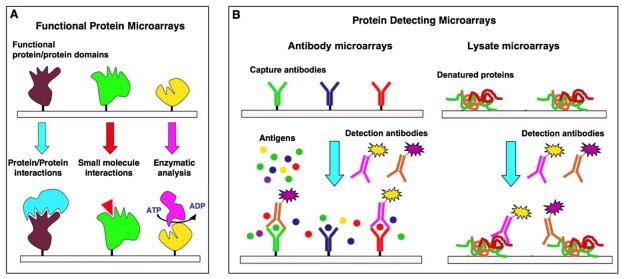Fig. 1.
Common formats used for the preparation of protein microarrays. Functional protein microarrays (A) are used to study and identify new molecular interactions between proteins, small molecules or enzyme substrates, for example. Protein detecting microarrays (B) are used to identify proteins from complex mixtures. In the sandwich format (B, left), captured proteins are detected by a secondary antibody typically labeled with a fluorescent dye to facilitate detection and quantification. In contrast to antibody microarrays, lysate microarrays (B, right) are typically immobilized onto nitrocellulose-coated glass slides (FAST slides) and detected using fluorescent-labeled solution-phase specific antibodies.

